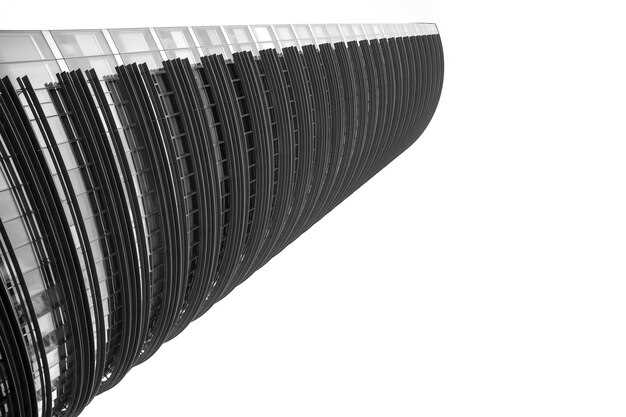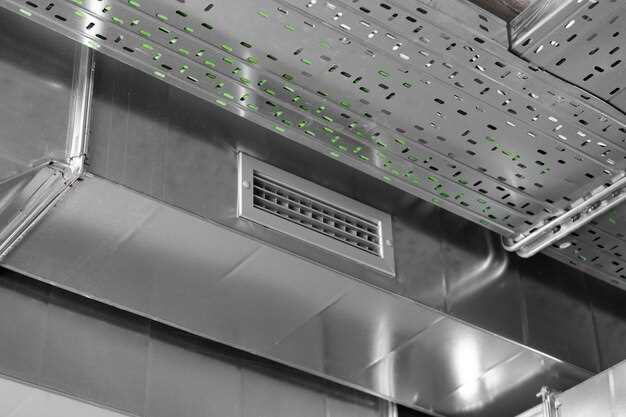
Upgrading your vehicle’s performance can often hinge on small but impactful changes. One such modification is the installation of high-flow air filters, which enhance airflow to the engine and improve overall efficiency. This guide aims to provide you with a comprehensive understanding of high-flow filters, their benefits, and the step-by-step process for integrating them into your vehicle.
High-flow filters are designed to increase the volume of air entering the engine, resulting in a more efficient combustion process. This improvement can lead to enhanced horsepower, better throttle response, and potentially increased fuel economy. However, not all filters are created equal, and selecting the right one for your vehicle requires careful consideration of various factors, including your driving style and performance goals.
In this guide, we will explore the different types of high-flow filters available, discuss the advantages they offer compared to traditional filters, and provide valuable tips for installation and maintenance. Whether you’re a seasoned automotive enthusiast or a casual driver looking to enhance your vehicle’s performance, this resource will equip you with the necessary knowledge to make informed decisions in upgrading your air intake system.
Choosing the Right High-Flow Filter for Your Vehicle Model
When upgrading your vehicle with high-flow filters, selecting the correct filter for your specific model is crucial for maximizing performance. High-flow filters are designed to provide improved airflow to the engine, enhancing combustion efficiency and ultimately increasing horsepower and torque. However, compatibility with your vehicle’s system must be ensured.
Begin by researching the specifications and requirements of your vehicle model. Consult the owner’s manual or manufacturer website for guidance on the stock air intake system and any restrictions that may apply. Next, consider the type of engine you have; different engines may require distinct filter designs to function optimally. For instance, cold air intakes may necessitate specific high-flow filters that differ from those used in standard setups.
Look for filters specifically tailored to your make and model. Reputable manufacturers often provide products that have been tested for optimal performance with various vehicles. Read product descriptions carefully, paying attention to flow rates, filtration efficiency, and how they correspond to your engine’s needs. Performance-oriented brands may offer additional benefits such as heat-resistant materials or washable and reusable designs.
Additionally, consider the filter’s installation process. Some high-flow filters are designed for bolt-on installation, while others may require modifications to the intake system. Ensure you are comfortable with the installation requirements or consider professional assistance if needed.
Ultimately, selecting the right high-flow filter involves balancing performance gains with compatibility, ease of installation, and maintenance needs. By taking the time to understand your vehicle’s requirements, you can enhance its performance responsibly and effectively.
Step-by-Step Installation Process for High-Flow Filters

Installing a high-flow filter can enhance your vehicle’s performance by improving airflow to the engine. Follow this detailed guide to ensure a proper and efficient installation.
Step 1: Gather Necessary Tools and Materials
Before starting, collect all the tools you will need. These typically include a socket set, screwdrivers, pliers, a clean rag, and a new high-flow filter. Ensure you have the correct filter compatible with your vehicle’s make and model.
Step 2: Prepare Your Vehicle
Park your vehicle on a flat surface and engage the parking brake. If necessary, lift the front hood and secure it with the hood prop for safety. It’s advisable to let the engine cool down completely before proceeding.
Step 3: Locate the Air Intake Housing
Identify where the air intake housing is situated in your vehicle. This is usually connected to the engine and can be found using the owner’s manual if needed. It may require removal of some fasteners or plastic clips to access it.
Step 4: Remove the Stock Air Filter
Carefully undo any screws or clips holding the air filter housing. Gently lift the housing to expose the stock air filter. Remove the old filter by pulling it out, ensuring no debris falls into the intake manifold during the process.
Step 5: Clean the Air Filter Housing
Before installing the new filter, take a clean rag and wipe down the air filter housing. This ensures that no dirt or contaminants will mix with your new filter, maintaining optimal performance and longevity.
Step 6: Install the High-Flow Filter
Position the high-flow filter into the air intake housing. Ensure it fits snugly and is properly seated to prevent any unfiltered air from entering the engine. Some filters may require a specific orientation, so refer to the instructions provided with your filter.
Step 7: Reassemble the Air Intake Housing
Once the high-flow filter is securely in place, reattach the air filter housing. Tighten all screws and clips evenly to avoid any air leaks. Double-check all connections to ensure everything is firmly held in place.
Step 8: Test Your Installation
Start your vehicle and allow it to idle for a few moments. Listen for any unusual sounds, which may indicate improper installation. After confirming the installation’s success, take your vehicle for a short drive to ensure the filter is functioning correctly and improving performance.
Step 9: Regular Maintenance
Once installed, monitor the filter for dirt buildup. High-flow filters often need cleaning and maintenance based on driving conditions. Follow the manufacturer’s recommendations for cleaning intervals to maintain optimal performance.
Maintenance Tips to Maximize the Benefits of High-Flow Filters

Regular maintenance is crucial to ensure that high-flow filters provide optimal performance for your vehicle. Here are key tips to help you maintain these filters effectively.
1. Frequent Inspection: Schedule regular inspections of your high-flow filters. Check for any signs of damage, dirt accumulation, or wear. This proactive approach helps identify issues before they affect performance.
2. Cleaning Routine: Depending on the type of high-flow filter you choose, consider cleaning it regularly. Many filters can be washed and reused, significantly extending their lifespan. Use a gentle cleaning solution recommended by the manufacturer and follow their specific instructions.
3. Replace When Necessary: Even with proper cleaning, high-flow filters will eventually need replacement. Monitor the performance of your vehicle; if you notice a decrease in power or fuel efficiency, it may be time for a new filter.
4. Proper Installation: Ensure that the filter is correctly installed according to the manufacturer’s specifications. An improper seal or misalignment can lead to leaks, reducing the filter’s efficiency and allowing contaminants to enter the engine.
5. Monitor Engine Performance: Keep track of your vehicle’s performance metrics such as horsepower and fuel economy. Any significant drop could indicate that your filter is clogged or malfunctioning, warranting immediate attention.
6. Use Compatible Oil and Fuels: High-flow filters are designed to function best with specific types of oil and fuel. Always use high-quality fuels and oils that complement your filter, as this can significantly enhance its efficiency and durability.
7. Check Intake System Components: Ensure that other components of the intake system, such as air ducts and mas air flow sensors, are clean and in good condition. A high-flow filter works best in a system where all parts are functioning optimally.
By adhering to these maintenance tips, vehicle owners can maximize the benefits of high-flow filters, ensuring better engine performance and longevity while maintaining reliability.
